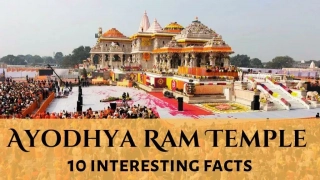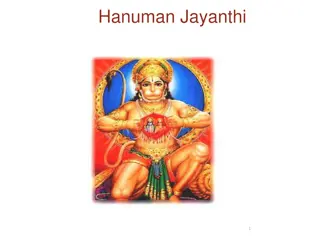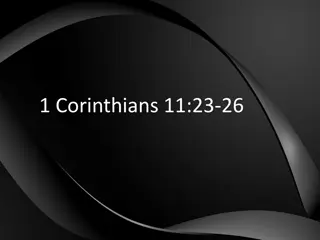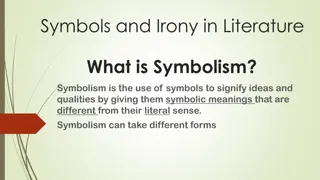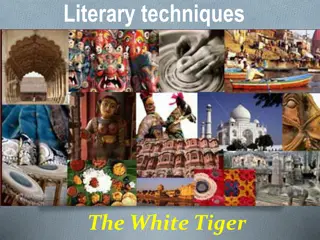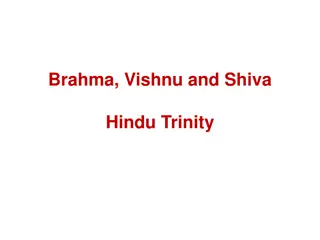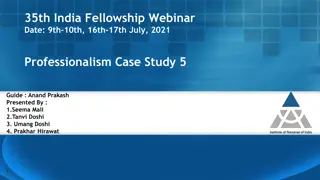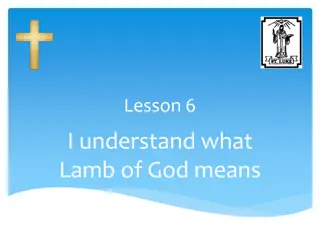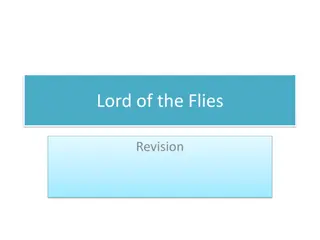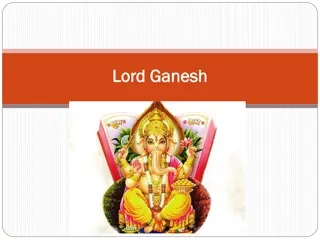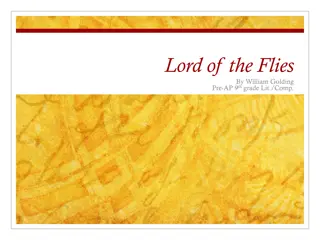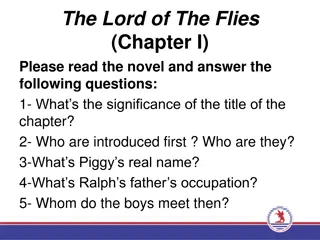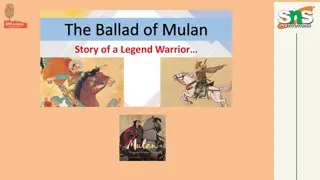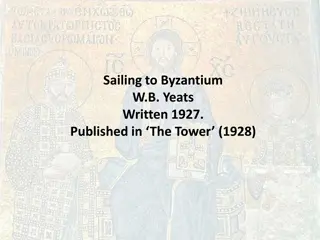Insights on Ram Navami: Teachings from Lord Rama's Life and Symbolism of Ayodhya
Ram Navami is a spring Hindu festival celebrating Lord Rama's birthday, focusing on teachings from the epic Ramayana. Learn about the essence of being Rama, his exemplary virtues, sacrifices, and teachings for humanity. Explore Ayodhya's symbolism as Ram Rajya, the epitome of a welfare state embodying morality, truth, and virtues. Discover the significance of Sita ji's devotion, purity, and motherhood in upholding values and dharma.
Download Presentation

Please find below an Image/Link to download the presentation.
The content on the website is provided AS IS for your information and personal use only. It may not be sold, licensed, or shared on other websites without obtaining consent from the author. Download presentation by click this link. If you encounter any issues during the download, it is possible that the publisher has removed the file from their server.
E N D
Presentation Transcript
Ram Navami By: Sevya and Vandya Agarwal
What is Ram Navami? Rama Navami is a spring Hindu festival that celebrates the birthday of the Lord Rama. Lord Rama is particularly important to the Vaishnavism tradition of Hinduism, as the seventh avatar of Vishnu. The festival celebrates the descent of Vishnu as Rama avatar, through his birth to King Dasharatha and Queen Kausalya in Ayodhya. This festival also marks the end of the nine days of Chaitra Navratri celebrations A lot of the essential pastimes of the lord with his brothers, Sita, Ravana, Hanuman, and many more characters in Ramayana are remembered on this auspicious day. Purpose of celebrating Ram Navami - to celebrate and reflect on the teachings of Ramayana
Teachings from Lord Ramas life Essence of being Rama- Excellence in every pursuit He was called Maryada Purushottam Ram Maryada - Had all desirable virtues that an individual seeks to inspire and fulfilled all his moral duties Purushottama symbolizes characteristics of ideal person Had purity and piety in his intentions and his actions - inspire affection and devotion Gave up rightful claim to the throne Agreed to go to exile for 14 yrs to fulfill vow of his father Considered his dharma as a son above his right to be king At the time when it was normal to have more than one wife - he gave into the ideal of having a single wife Respect for even his enemies- Praised Ravana and asked Lakshmana to go and seek knowledge, requested for his proper cremation. Symbol of sacrifice Principle of humanity and humility On defeating Ravana, he made Vibheeshana the king - usually victory has the right to kingdom and riches. Despite his Divinity, Ram requested Sage Vasistha to be his guru and give him spiritual knowledge Model of brotherhood - Gave the throne to Bharat, would knowingly lose to Bharat Ideal administrator Unparalleled warrior
What does Ayodhya Symbolize Ayodhya - Ram Rajya - How a welfare state is - Ram as a king would go undercover every night to hear the pleas of his subjects and have a common man perspective State of morality , truth and virtues, happiness everywhere -No suffering of mental, bodily or physical nature in citizens No hatred among people and everyone is conscious of their duties No poverty, no greed Ecosystem is healthy Teachings from the life of Sita ji Duty as a wife - joins her husband in 14 years exile not worrying about her comforts Symbol of purity - protects her chastity and survives over a year in captivity on the strength of her love and attention of religious values and duty Devotion to husband -Had complete faith on Ram and did not give in to Ravana despite his courting and threats. Ideal mother - lived in ashram with kids to imbibe right teachings from early age
Teaching from life of Hanuman Epitome of devotion - forgot his own self and was completely immersed in worshipping Ram Worship by action - 'Ram Kaaj' Surrender his heart, feelings and actions to God's work o Burning Lanka, crossing ocean, uprooting and lifting mountain. o Represents unending and relentless effort o No greed o Removed all devilish tendencies Before meeting Ram, he was an ordinary servant of Sugreev but soon rose to the stature of 'Param Bhakth' through his devotion and service Teaching of Brotherhood Lakshman left the pleasure and went with Ram to serve him even though he did not get exile Lakshman's wife Urmila and mother Sumitra did not stop him instead encouraged him to go Bharat refused to become the king and kept Ram ji's slippers on the throne and administered the kingdom like a hermit Old Jatayu (bird) fought till the end and gave his life while fighting for protection of the respect of women Monkey and other small animals (Reech vanar) sacrificed their life and worked enthusiastically to fight against wrongdoings of Ravana Example of Squirrels (gilhari) trying to fill their mouth with sand and dump it in ocean to fill it Vibhishan, brother of Ravana- left his kingdom, relationships , bore the criticism but gave his support to righteousness All of Ram s brothers respected and served him unconditionally
How do you celebrate Ram Navami? Celebrating the festival of Ram Navami on the 9th day of Chaitra month indicates the removal of bad powers and entrance of divine power on the earth Together as a social event Reflection of teachings and worship and emulate in our life Ram pujan May we get inspiration and courage to reflect him within us, in our actions and life and in the environment around us Worship for contentment in life Sita pujan - Purity and faith Brotherhood (Bandhu) pujan - Remove difference, be united and create cordial environment Hanuman pujan - worship devotion and surrender, and relentless effort for doing good and removing vices Rath yatra (chariot procession) of Rama, Sita, Lakshmana and Hanuman Sankalpa - to follow the path of righteousness and live for morals and not give in to comforts. Vedic chants and mantras Fasting Seva
Fun Facts about Lord Rama After defeating the evil Ravana, Rama ruled his kingdom Ayodhya for about 11,000 years of complete peace and prosperity Rama s bow was so powerful that it could wipe out an entire army- and it did. Most Hindus believe that Rama lived 1.2 million years ago, in the Treta Yuga- though the text is dated 7th-4th BC. Rama is the 7th incarnation of the God Vishnu, and next to Krishna, he is considered to be his most important avatar (manifestation of a deity). Rama is a symbol of sacrifice, a model of brotherhood, an ideal administrator, and a warrior unparalleled. The term Rama Rajya stands for the most exalted concept of a welfare state. Rama was not only divine; he was invested with the highest values of an enriched tradition started by Raghu. In Tulsidas s Ramayana, it is mentioned that in Sita s Swayamvar, Lord Rama had lifted the bow and arrow of Lord Shiva and it broke. When Lord Rama went to exile he was 27 years old. Rama navami is also observed as the marriage day of Rama and Sita and thus also referred to as Kalyanotsavam.


